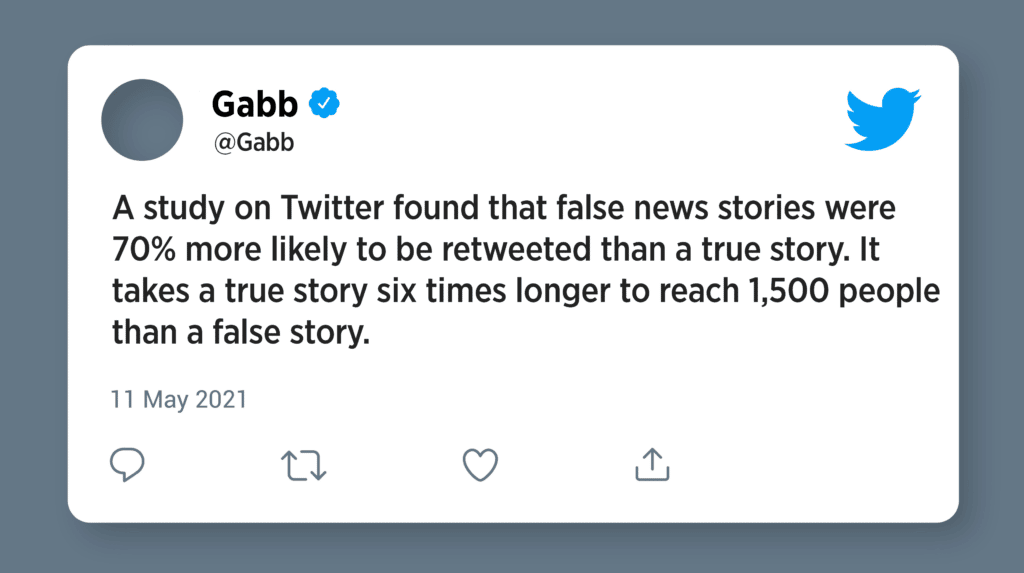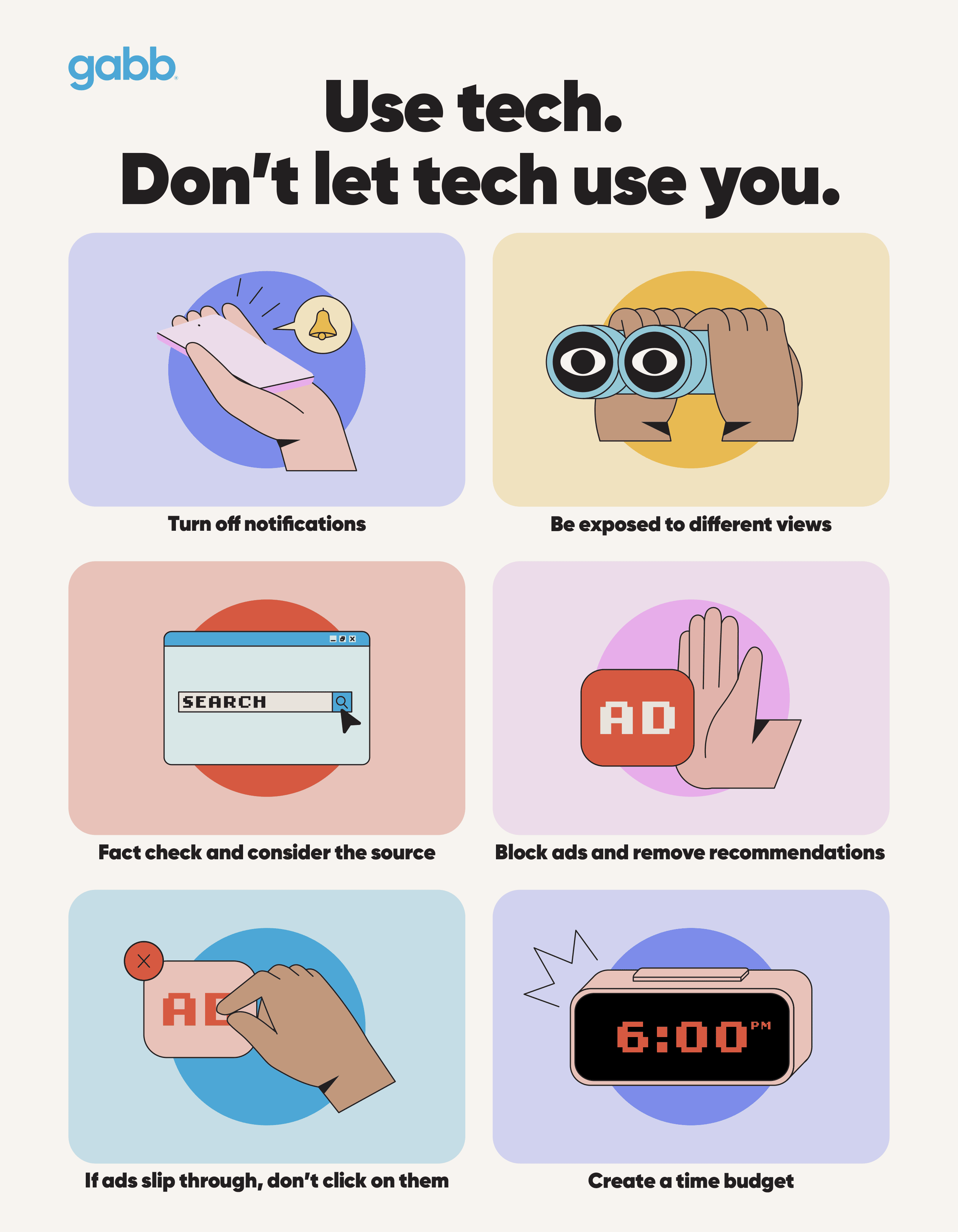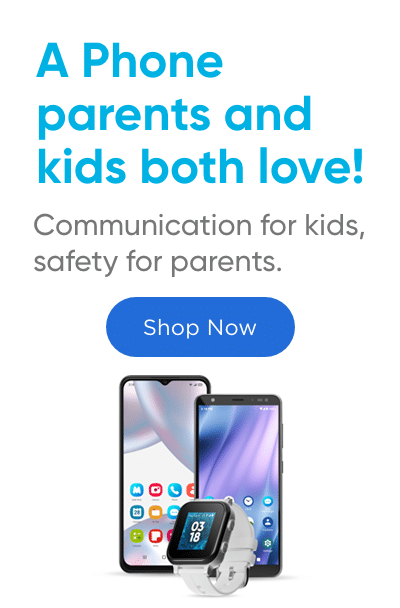Let’s Teach Our Kids: Use Tech. Don’t Let Tech Use You!
Teaching our kids to be aware of how platforms collect our data and feed us targeted ads
JAN 04, 2023
Let’s Teach Our Kids: Use Tech. Don’t Let Tech Use You!
Teaching our kids to be aware of how platforms collect our data and feed us targeted ads
The year was 1994, and the first banner ad was seen online. It was a novelty and about 44% of people clicked on it. [1] Today, things are much different.
When we open an app or a website, ads pop up and assail us from all sides. It’s believed that the average person in 2022 sees about 10,000 ads a day. [2]
So how do targeted ads work? These ads are designed especially for you, the reader. Have you ever seen an ad for something you just spoke to a friend about? Or experienced a spooky moment of an ad appearing when you merely thought of something? How is this even possible?
There’s an explanation. We will dive into the psychological maneuvers we face every day through exposure to targeted ads and data collection methods.
The information in this article will help parents better understand how social media companies are profiting from our children’s private information. Parents may choose to read this article with their family and discuss the risks that come with social media use.

What is Data Collection?
How does data collection work? We hear about data collecting often, and we’re told we should be cautious of it. But what does it actually mean?
Tech companies such as Google and Facebook include terms and conditions upon the creation of an account. The user must accept these terms to proceed with a download. A 2017 Deloitte survey found that 91% of those surveyed said they willingly accept the terms when installing an app, accepting updates, or creating online accounts, without even reading them. [3]
It’s in the terms and conditions that these companies discreetly mention they will gather the user’s data. And we usually agree to it with a quick scroll and a click.
What I want people to know is that everything they’re doing online is being watched, is being tracked, is being measured. Every single action you take is carefully monitored and recorded. Exactly what image you stop and look at, for how long you look at it.
—Jeff Seibert, former Twitter executive [4]
The data collected is then used to create a model of each individual. These models represent us so well they are able to predict our actions.
All this data [collection] has almost no human supervision.
– Sandy Parakilas, former Facebook and Uber manager. [4]
Websites and Platforms Gather Our Data and Predict Our Behavior
Being able to predict our actions with certainty allows these companies to essentially guarantee our behavior, and advertisers are willing to pay hefty sums for these predictions. To sell these calculations of human behavior, they must have keen observations which require an abundance of data.

What Data Does TikTok and Google Collect?
Here is a perfect example of how social media apps leverage user information and behavior as their product. In a recent study, TikTok and YouTube were determined to be the social media apps that collect the most data from users. Researchers found that YouTube, owned by Google, used the data to serve us customized ads. [14] Both YouTube and TikTok survey our physical location, posts we engage with, the time we spend on any given post, along with any other personal information we have disclosed with the apps.
In TikTok’s case, we do not know how nor for what purpose the data is used.
We Are the Product
We don’t often pay for the products we use online. Name any social platform and you’ll quickly realize it’s all free to us. Twitter? Free. Pinterest? Free. These sites are disguised as a free product, but in reality we, the users, are the product. Consumers trade their privacy for the free use of these platforms. Advertisers pay social media companies in order to have access to our data, learn our habits, and continue creating targeted ads for us. [10] Predictably, our purchases are anticipated, and the model proves to be incredibly profitable for two of the three parties involved.

Big Tech Goals
In The Social Dilemma—a Netflix documentary that interviews former executives from social media platforms—these execs claim that big tech companies have three main goals: engagement, growth, and advertisement. [4]
1. Engagement
Social platforms have a goal to drive usage and keep us scrolling. Time on screen is king. Their algorithms will show us exactly what we’re most interested in and reaffirm our beliefs (also known as confirmation bias) with personalized content. Warren Buffett, the famous business tycoon, said, “What the human being is best at doing is interpreting all new information so that their prior conclusions remain intact.” [11] No two social media feeds will ever be identical because each is tailored to that one individual.
2. Growth
Growth means the user keeps coming back and invites friends to join in. Social media will send us notifications to remind us of their platform. These notifications range from “someone tagged you in a photo” to “on this day 3 years ago…”

These are not unwelcomed notifications, but they are a tactic to keep us on the screen where we are exposed to additional ads, which in turn brings in money for the companies involved.
3. Advertisement
To monetize their services, tech companies rely on advertisers. To get advertisers, tech companies need data, which means they need our attention. They gain our attention by focusing on how to increase engagement and growth.

Kids’ Data Online
As parents, we all know it’s our responsibility to protect our children. What many of us don’t realize is that even if our child doesn’t have access to a social media account, plenty of other websites, apps, and video games are collecting their data.
It is illegal in the United States for children under 13 to have their data collected without parental permission. [8] Many sites include it in the fine print that we often scroll past. For example, popular sites such as YouTube Kids and Roblox obtain parents’ permission in the fine print to collect kids’ data.
Furthermore, with well-meaning intentions, we divulge our children’s personal information online through posts and pictures. This can put kids at risk of future identity theft. “Research by Barclays suggests that by 2030, information shared by parents online will lead to two-thirds of the identity theft committed against young people.” [5]
On average, parents with children aged zero to 14 share 71 photos and 29 videos of their child every year to social media sites. [5]
This is uncharted territory as our own parents never had to deal with this scenario. But there is hope and help ahead. Parents who choose to share their kids’ pictures online can consider setting their social accounts to “private” as an initial barrier of protection. By sharing with our kids what we know about data collection and how algorithms work, as a family we can mitigate this exploitation.

Teaching Kids to Use Tech
Technology is amazingly useful, but it’s also designed to be addictive by capturing our attention. We can teach our kids to take charge of their usage and not let tech control them.
Turn off notifications
A beeping phone is distracting to anyone. A study found that notifications from social media services are an important factor in phone overuse. Participants of the study who received notifications during a task performance saw their efficiency and concentration decline. [6] We can help our kids self-monitor by teaching them how to turn off notifications and modeling it ourselves.

Be exposed to different views
Ever wonder “how do algorithms work?” Algorithms are created by designers and then learn (hence the term “machine learning”) as it comes into contact with users. The algorithm is fluid and changes as it learns, becoming better and more accurate with each day.
Once the algorithm identifies something we like, for example, soccer, it will start showing us ads and information about soccer to get our attention. As a user, we become even more knowledgeable in soccer as a result.
But there’s also basketball out there, and we’re not learning anything about it because the algorithm knows we like soccer. But maybe we could like basketball if we were exposed to it. We could maybe even understand and love basketball if given the chance.

This simplified example shows the benefit of encouraging kids to explore different points of view. If they are on social media, encourage them to follow respectable heads of the community who share their views and those who don’t. They’ll be able to see more sides of an issue, form their own opinions, and gain empathy for others.
Fact check and consider the source
Honesty is a characteristic that all parents want to instill in their children. We can encourage them to fact-check before they share online.

Source: [7]
With the plethora of content on the internet, fact-checking can be tricky. We can teach kids to find a reliable sources by looking up websites ending in .edu, .org, and .gov.
When looking at the news, check multiple sources before deciding on the facts. Even the most reputable news source can be biased and share distorted facts to support their own beliefs.
With the speed at which false stories spread, it’s important to consider rumors about a peer. Facts and sources are important, but when it comes to gossip, it’s better to not share. We can remind our children that hearsay can affect someone’s life and happiness.
If ads slip through, don’t click on them
Ad blockers are not always foolproof. If an ad gets through the blocker, we want to avoid clicking on it, as interest in the ad will signal to the algorithm that we would want to see more of this content.
Create a time budget
Talk to your child about how they feel with their tech usage. Are they spending too much time on it? Having time to unplug is of great benefit to our well-being. A study found that most students reported a more positive mood, better sleep, and decreased anxiety after a tech detox. [9]
You may consider making a family tech plan or setting up a time budget together. Ask them how long they think they should spend using tech, and come up with a budget. At the end of the week, evaluate the actual time spent on screens. We’re often not aware of how much time we actually spend online. Keeping a budget and being mindful of it can help us overcome overuse.
While a screen time budget is important and useful, we can take the focus away from screens by encouraging screen-free activities such as crafts, outside play, or learning a new skill.
Use our printout to motivate younger children by adding a sticker to a square each time they participate in healthy activities.
Parents Can Help
Because data collection from big tech is a relatively new thing, there are few regulations and laws to protect us and our children from being exploited. As parents, we can become active participants in our communities and raise our voices to express concern over data collecting and privacy.
In the meantime, we can teach our children the risks and benefits of their online use, and help them learn how to limit their data collection.
Don’t miss out on any educational resources for parenting in the digital age on our blog.





Success!
Your comment has been submitted for review! We will notify you when it has been approved and posted!
Thank you!